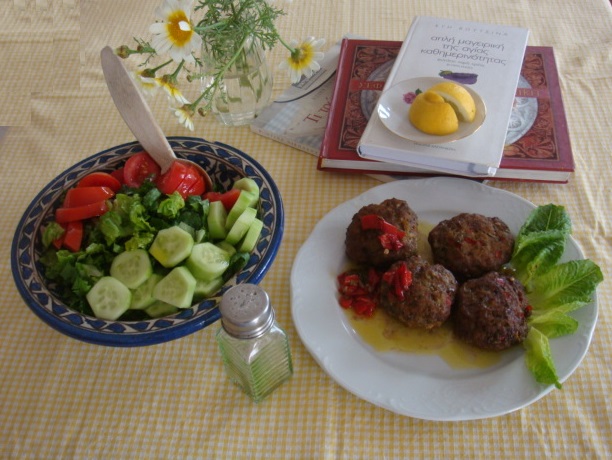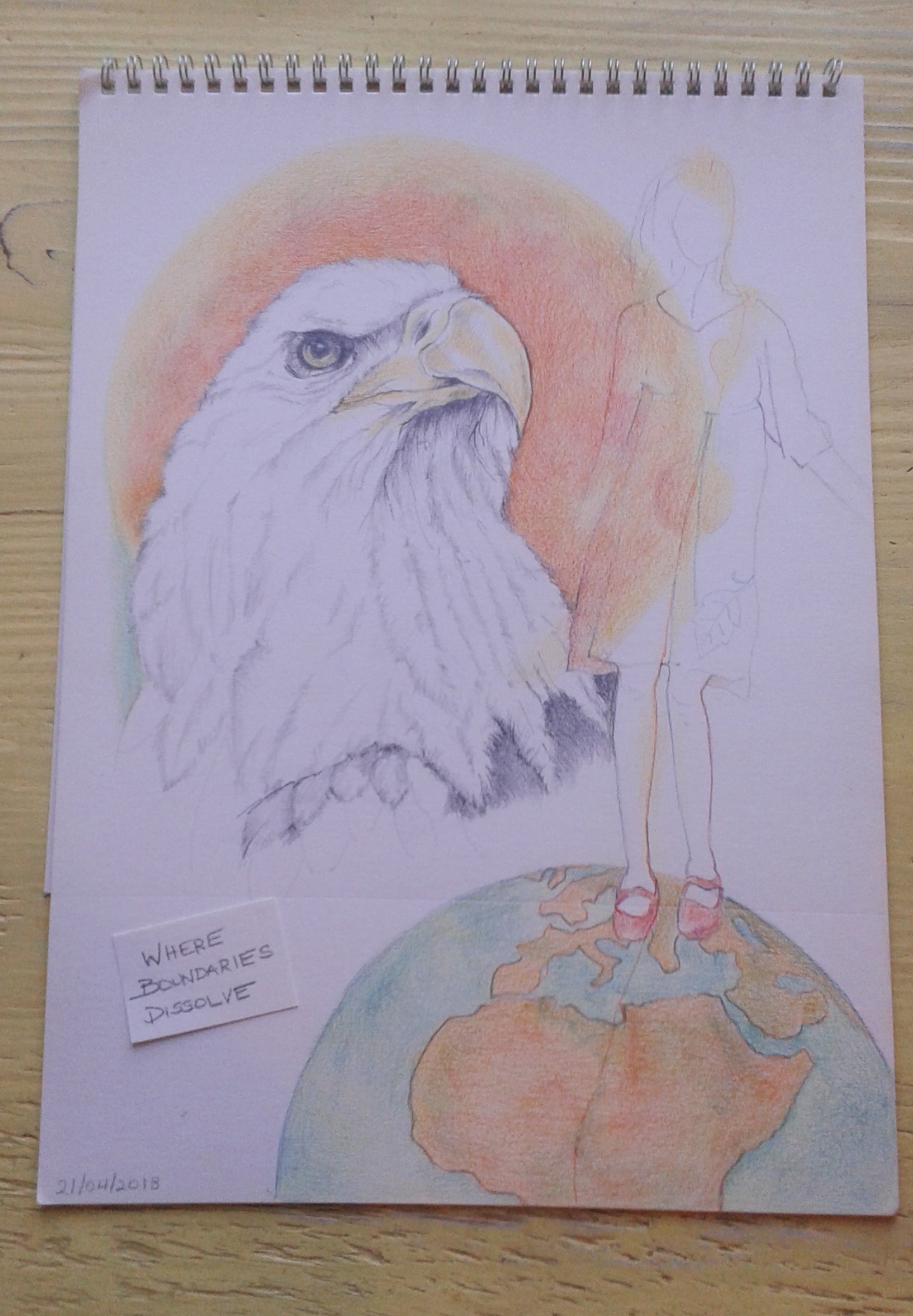Something a little different today… a Sunday lunch recipe

‘Give me spearmint to smell; Berberan and basil; Marina my green star; Marina morning sunlight; Marina wild pigeon and summer lily’ (Marina by poet Odysseas Elytis)
Different versions of meat and vegetarian burgers and patties are prepared and eaten by many people in many countries. I myself have been a big fan since childhood and over the years I have made all sorts of meat, including fish, and vegetarian patties and burgers. My first fond memories of burgers go way back to childhood in the late sixties. My father used to often take us out for lunch to a diner’s on the Saturdays my mother was at work. We invariably had a burger and a huge milkshake served in a tin ‘glass’ with a striped paper straw. Well, at least that’s how I remember it. Memories of tastes and smells travel through time and take us back to past events, both the ones that are dormant and those we can readily recall, like the memory of my mother rubbing basil leaves between her fingers or the smell of the peppermint leaves floating in jugs of fresh lemonade or the cool mint smell of dark After Eight chocolates that arrived in Christmas parcels. The smell of tea served with cakes almost always transfers me to Marcel Proust’s tea and Madeleine cake scene. More recently, I have taken up a sugar and gluten-free diet, and so, I have replaced the grain ingredients in meat balls and patties with vegetables. So, I use different kinds of minced meat or a combination, for instance, chicken and beef, preferably lean. I grate or I finely chop onions, carrots, courgettes, peppers, parsley and sometimes a little cabbage, and I squeeze the juice out of the carrots and the courgettes. Then I mix all the ingredients in a bowl and add a little olive oil and lemon, salt, pepper and paprika, thyme and oregano and mustard powder (optional). Once I have made the patties I might fry, but more often cook them in the oven in a baking pan with oil, a little garlic and slices of peppers, which is healthier, and also, requires less effort and cleaning up afterwards. Finally, I serve with fresh salad/s and a parsley dip made of chopped parsley, olive oil, vinegar, salt and a little boiled potato as a thickener.


